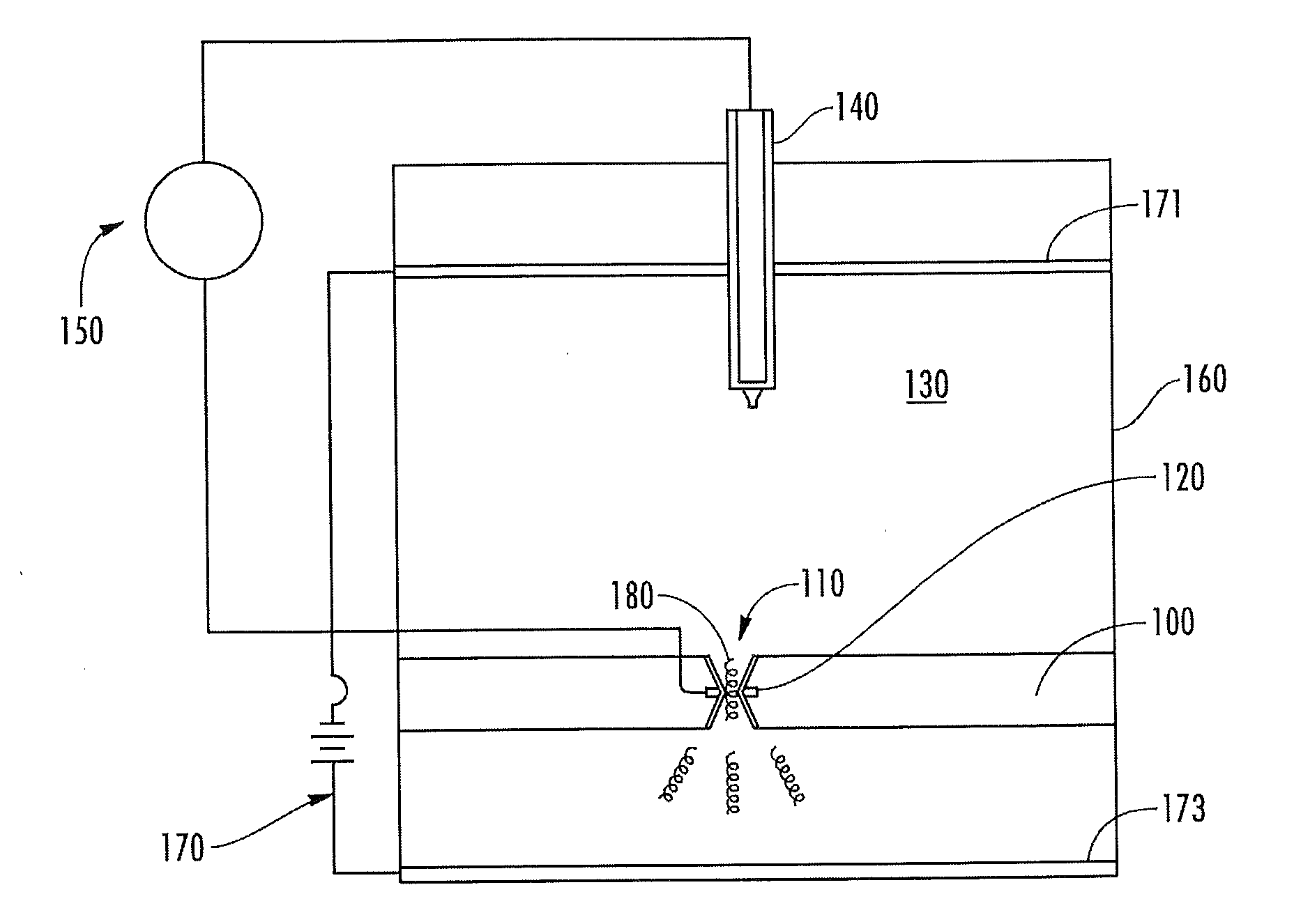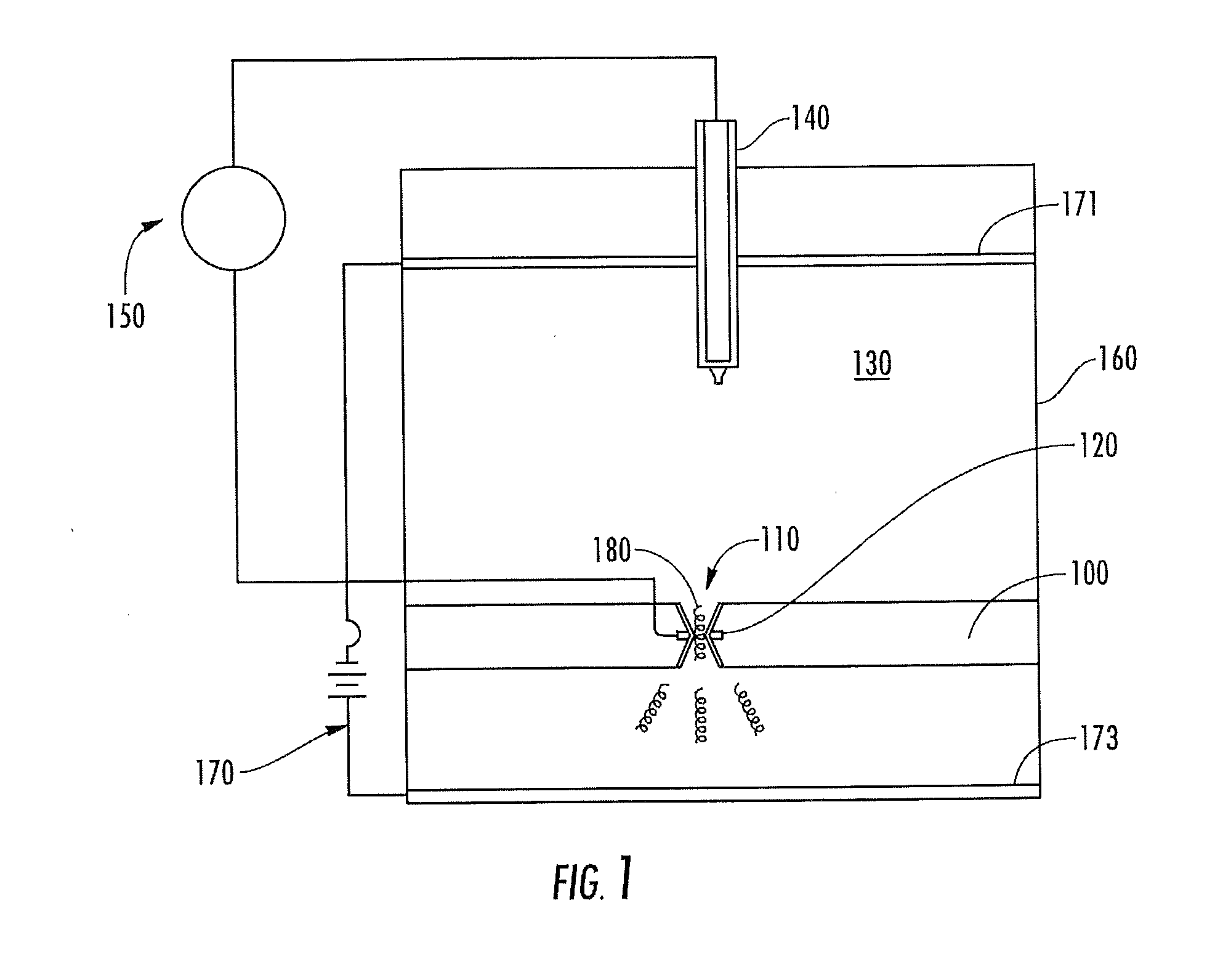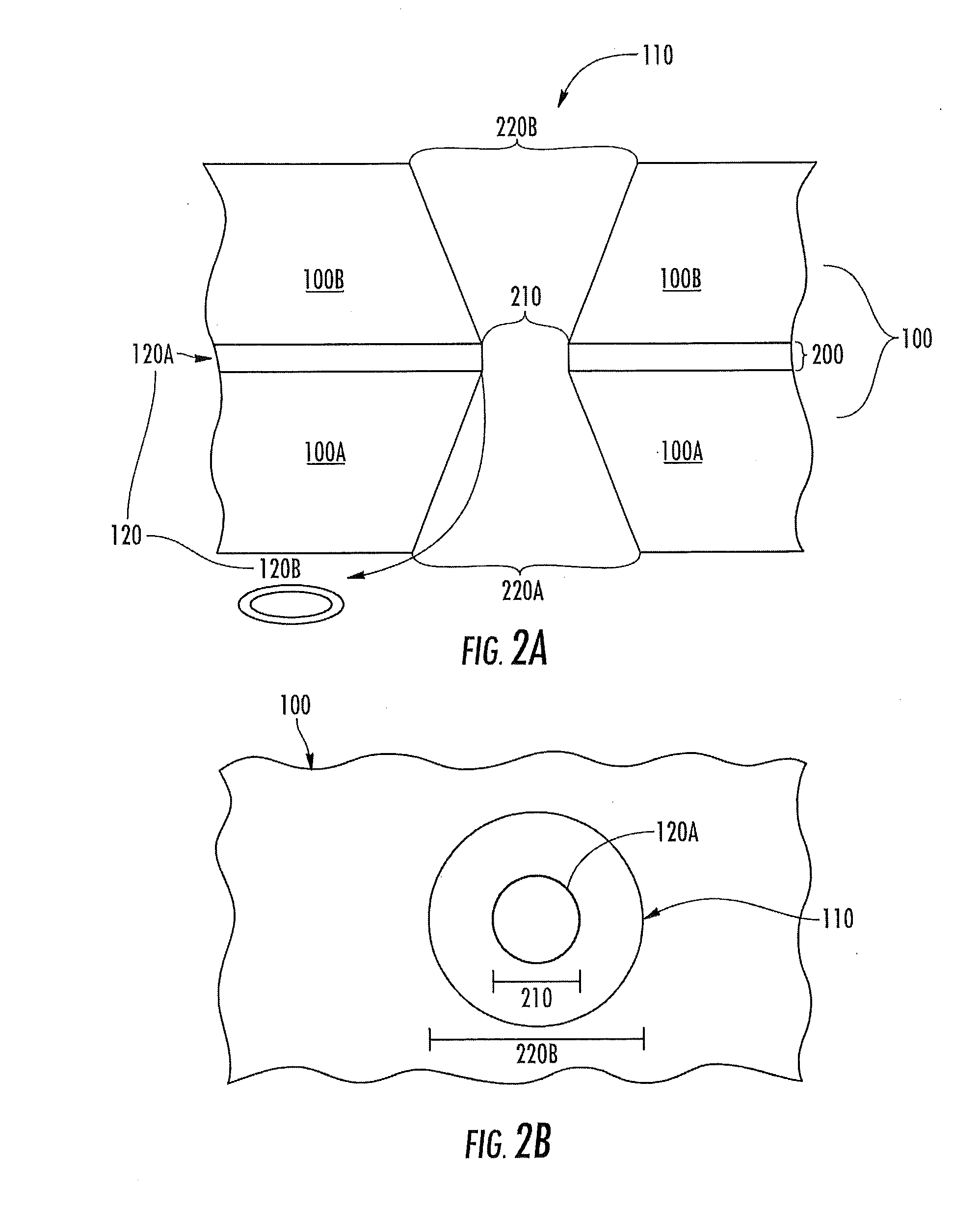Electrical double layer capacitive devices and methods of using same for sequencing polymers and detecting analytes
a capacitive device and double layer technology, applied in the direction of resistance/reactance/impedence, electrolytic capacitors, instruments, etc., can solve the problems of short reads, undesirable errors, and pcr-related costs
- Summary
- Abstract
- Description
- Claims
- Application Information
AI Technical Summary
Problems solved by technology
Method used
Image
Examples
example 1
[0076]To demonstrate that a simple EDL device can be used as a sensor to detect surface ionic and molecular events, a circular flat-gold-disc electrode (d=1.6 mm) in 0.5 M H2SO4 solution was used to examine adsorption of sulfate and bisulfate ions on the electrode surface. A H2SO4 solution was chosen because of the extensive literature on the adsorption of sulfate and bisulfate using various spectroscopic techniques and scanning tunnelling microscopy (STM).
[0077]In the obtained capacitance-potential (CP) curve (See FIG. 9), starting at approximately −0.3 V in the forward scan direction, the first characteristic feature at approximately −0.14 V (marked by ) is denoted as reorientation of water molecules at the Au surface in an acidic solution. As Parry (Parry D., Samant M. G., Seki S. H., Philpott M. R., Ashley K. 1993. Langmuir, 9, 1878) first reported in Plasmon resonance studies, the hydrogen end of a water molecule attaches to the surface at −0.2 V and the oxygen end attaches to...
example 2
[0078]To show that an EDL sensor can be used to characterize biomolecules such as proteins or peptides, we conducted peptide binding studies. Using a test setup (See FIG. 10), capacitance of the Au disc electrode was measured while an aliquot (60 μl ) of solution containing gold binding peptides (AuBP; at 1 mg / ml) was added through a pipette to the PBS solution (20 ml 0.1 M PBS). Two types of measurements were taken: 1) time-dependent capacitance when the electrode was held at 0 V, and 2) potential-dependent capacitance. For this study, two types of Au binding peptides were examined: a short peptide with 12 amino acids (AuBP-a: WAGAKRLVLRRE) and a long peptide made of three repeats of the short one (AuBP-b). FIG. 11A shows the binding characteristics over time for AuBP-b peptides at the Au surface. Because peptides were injected to the solution surface, their diffusion down to the vicinity of the electrode surface took some time. Upon their arrival, the EDL sensor responded immediat...
PUM
| Property | Measurement | Unit |
|---|---|---|
| Thickness | aaaaa | aaaaa |
| Diameter | aaaaa | aaaaa |
| Diameter | aaaaa | aaaaa |
Abstract
Description
Claims
Application Information
 Login to View More
Login to View More - R&D
- Intellectual Property
- Life Sciences
- Materials
- Tech Scout
- Unparalleled Data Quality
- Higher Quality Content
- 60% Fewer Hallucinations
Browse by: Latest US Patents, China's latest patents, Technical Efficacy Thesaurus, Application Domain, Technology Topic, Popular Technical Reports.
© 2025 PatSnap. All rights reserved.Legal|Privacy policy|Modern Slavery Act Transparency Statement|Sitemap|About US| Contact US: help@patsnap.com



